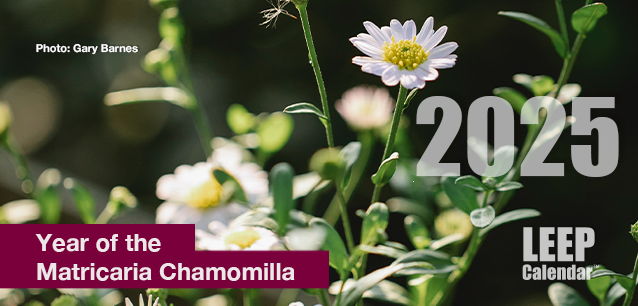 AD
AD
Today is: August 17
Scroll to explore events active on this date.
Additional Events on LEEP
LEEP INK FEATURES

August? Absolutely!
In August, we live through the Dog Days of Summer. It's hot and often humid, and those who can leave for better climates do. Down south, winter is in full force. August is also known as "the ...

In The Heat of July: July 2025 Events
Is it hot enough (or cold enough if you're below the equator) for you yet? There is actually a day for that! Like every month, I pick a diverse collection of events you may or may not know about. This ...

May Blooms: Events in May 2025
Along with October, May is one of the most densely packed months of the year. It's before the summer humidity and the last whole month of the school year. The weather is warming in t...
About 2025 Herb of the Year, Matricaria Chamomilla
Ends: Dec 31, 2025
DESCRIPTION:
SWEET RELAXATION:
2025 IS THE YEAR OF CAMOMILE
Since 1991, the International Herb Association has chosen an herb or spice to represent that year. 2025 is the year of Matricaria Chamomilla.
Matricaria, commonly known as chamomile, is a genus of flowering plants in the Asteraceae family. The genus includes several species, with the most well-known and widely used species being Matricaria chamomilla, commonly referred to as German chamomile or chamomile. Chamomile is native to Europe and Western Asia and in various regions worldwide for its medicinal and aromatic properties.
Chamomile is a small, herbaceous plant that typically grows to a height of 8 to 24 inches (20 to 60 centimeters). It has finely divided, feathery leaves and produces daisy-like flowers with a characteristic yellow center and white petals. The flowers are known for their pleasant, apple-like fragrance.
Chamomile has a long history of traditional use as a medicinal herb due to its calming and soothing properties. Chamomile tea, made by steeping the dried flowers in hot water, is a popular herbal remedy known for its relaxing effects and potential benefits for sleep and digestion. The tea relieves anxiety, promotes relaxation, and treats mild gastrointestinal complaints.
The active compounds in chamomile, including chamazulene, bisabolol, and apigenin, are believed to contribute to its medicinal properties. These compounds possess anti-inflammatory, antioxidant, and mild sedative properties, which may explain the herb's therapeutic effects.
In addition to its medicinal uses, chamomile is valued for its aromatic qualities and can be found in cosmetics, perfumes, and aromatherapy products. The essential oil extracted from chamomile flowers is used in various skincare formulations and has a soothing effect on the skin.
It's worth noting that chamomile resembles another popular herb known as Roman chamomile (Chamaemelum nobile), a different species in the same family. Roman chamomile is a perennial plant with properties similar to German chamomile, although it is primarily used in essential oil production and less commonly consumed as tea.
Chamomile is generally considered safe for most people when consumed in moderation. However, individuals with known allergies to plants in the Asteraceae family, such as ragweed, may experience allergic reactions to chamomile and should exercise caution.
Overall, chamomile (Matricaria chamomilla) is a widely recognized herb with a long history of traditional use for its calming and soothing properties. Whether enjoyed as a tea or used in other forms, chamomile remains popular for relaxation and natural wellness.
VIDEOS
SUPPORTING DOCUMENTS
Currently, this event does not have supporting documents.
ADDITIONAL IMAGES
Currently, this event does not have supporting images.
Where would you like to go now?
 AD
AD


/footer-logo.svg)
